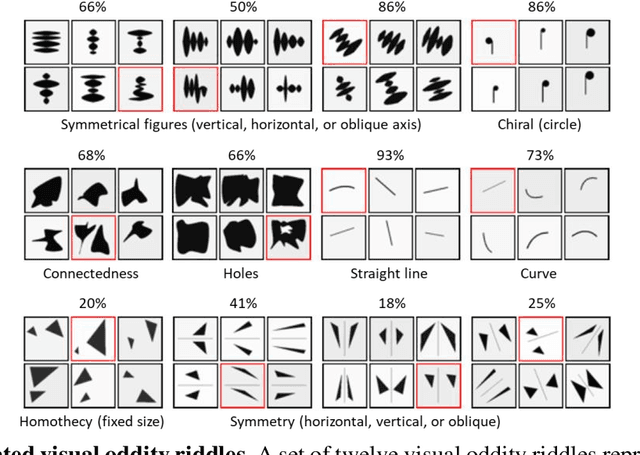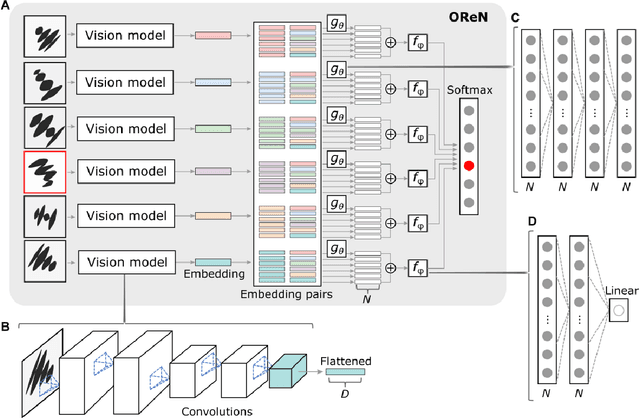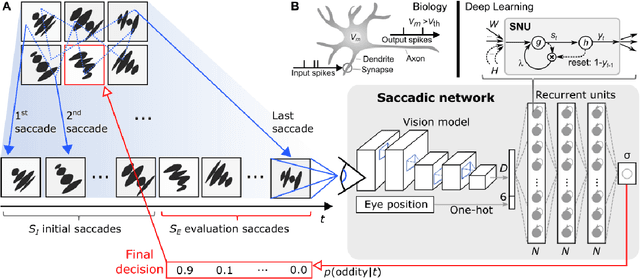Hlynur Jónsson
On the visual analytic intelligence of neural networks
Sep 28, 2022



Abstract:Visual oddity task was conceived as a universal ethnic-independent analytic intelligence test for humans. Advancements in artificial intelligence led to important breakthroughs, yet competing with humans on such analytic intelligence tasks remains challenging and typically resorts to non-biologically-plausible architectures. We present a biologically realistic system that receives inputs from synthetic eye movements - saccades, and processes them with neurons incorporating dynamics of neocortical neurons. We introduce a procedurally generated visual oddity dataset to train an architecture extending conventional relational networks and our proposed system. Both approaches surpass the human accuracy, and we uncover that both share the same essential underlying mechanism of reasoning. Finally, we show that the biologically inspired network achieves superior accuracy, learns faster and requires fewer parameters than the conventional network.
 Add to Chrome
Add to Chrome Add to Firefox
Add to Firefox Add to Edge
Add to Edge